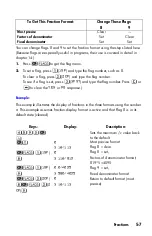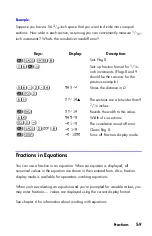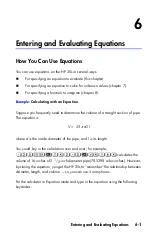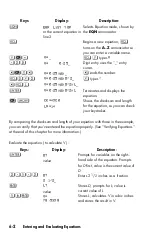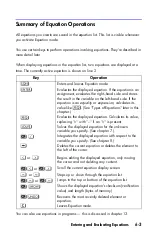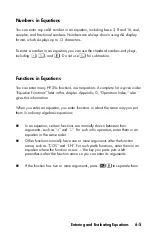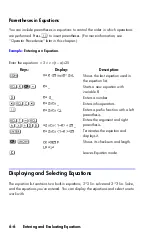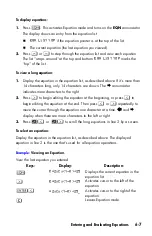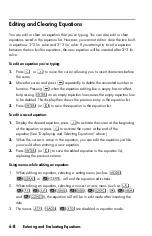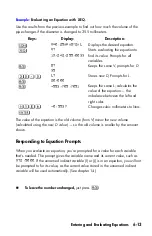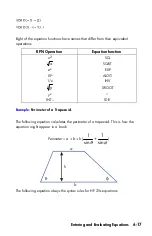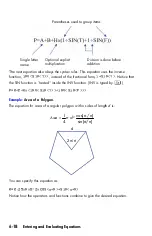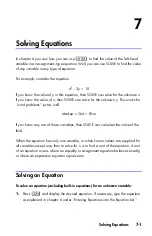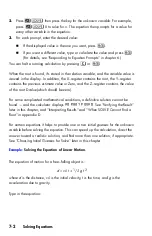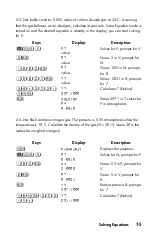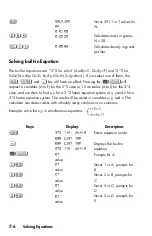
Entering and Evaluating Equations
6-11
To evaluate an equation:
1.
Display the desired equation. (See "Displaying and Selecting Equations"
above.)
2.
Press
or
. The equation prompts for a value for each variable
needed. (If the base of a number in the equation is different from the current
base, the calculator automatically changes the result to the current base.)
3.
For each prompt, enter the desired value:
If the displayed value is good, press
.
If you want a different value, type the value and press
. (Also see
"Responding to Equation Prompts" later in this chapter.)
To halt a calculation, press
or
. The message
is shown in
line 2.
The evaluation of an equation takes no values from the stack — it uses only numbers
in the equation and variable values. The value of the equation is returned to the X–
register.
Using ENTER for Evaluation
If an equation is displayed in the equation list, you can press
to evaluate
the equation. (If you're in the process of
typing
the equation, pressing
only
ends
the equation — it doesn't evaluate it.)
Type of Equation
Result for
Result for
Equality:
g(x)
=
f(x)
Example:
x
2
+
y
2
=
r
2
g(x)
–
f(x)
x
2
+
y
2
–
r
2
Assignment:
y
=
f(x)
Example:
A
= 0.5
×
b
x
h
f(x)
0.5
×
b
×
h
y
–
f(x)
A
– 0.5
×
b
×
h
Expression:
f(x)
Example:
x
3
+ 1
f(x)
x
3
+ 1
Also stores the result in the left–hand variable, A for example.
Summary of Contents for 35s
Page 1: ...HP 35s scientific calculator user s guide H Edition 1 HP part number F2215AA 90001 ...
Page 14: ...12 Contents ...
Page 15: ...Part 1 Basic Operation ...
Page 16: ......
Page 46: ...1 30 Getting Started ...
Page 63: ...RPN The Automatic Memory Stack 2 17 A Solution ...
Page 64: ...2 18 RPN The Automatic Memory Stack ...
Page 74: ...3 10 Storing Data into Variables ...
Page 180: ...12 14 Statistical Operations ...
Page 181: ...Part 2 Programming ...
Page 182: ......
Page 246: ...15 12 Solving and Integrating Programs ...
Page 270: ...16 24 Statistics Programs ...
Page 284: ...17 14 Miscellaneous Programs and Equations ...
Page 285: ...Part 3 Appendixes and Reference ...
Page 286: ......
Page 308: ...B 8 User Memory and the Stack ...
Page 322: ...C 14 ALG Summary ...
Page 336: ...D 14 More about Solving ...
Page 346: ...E 10 More about Integration ...
Page 352: ...F 6 Messages ...
Page 370: ...G 18 Operation Index ...
Page 382: ...Index 12 ...

